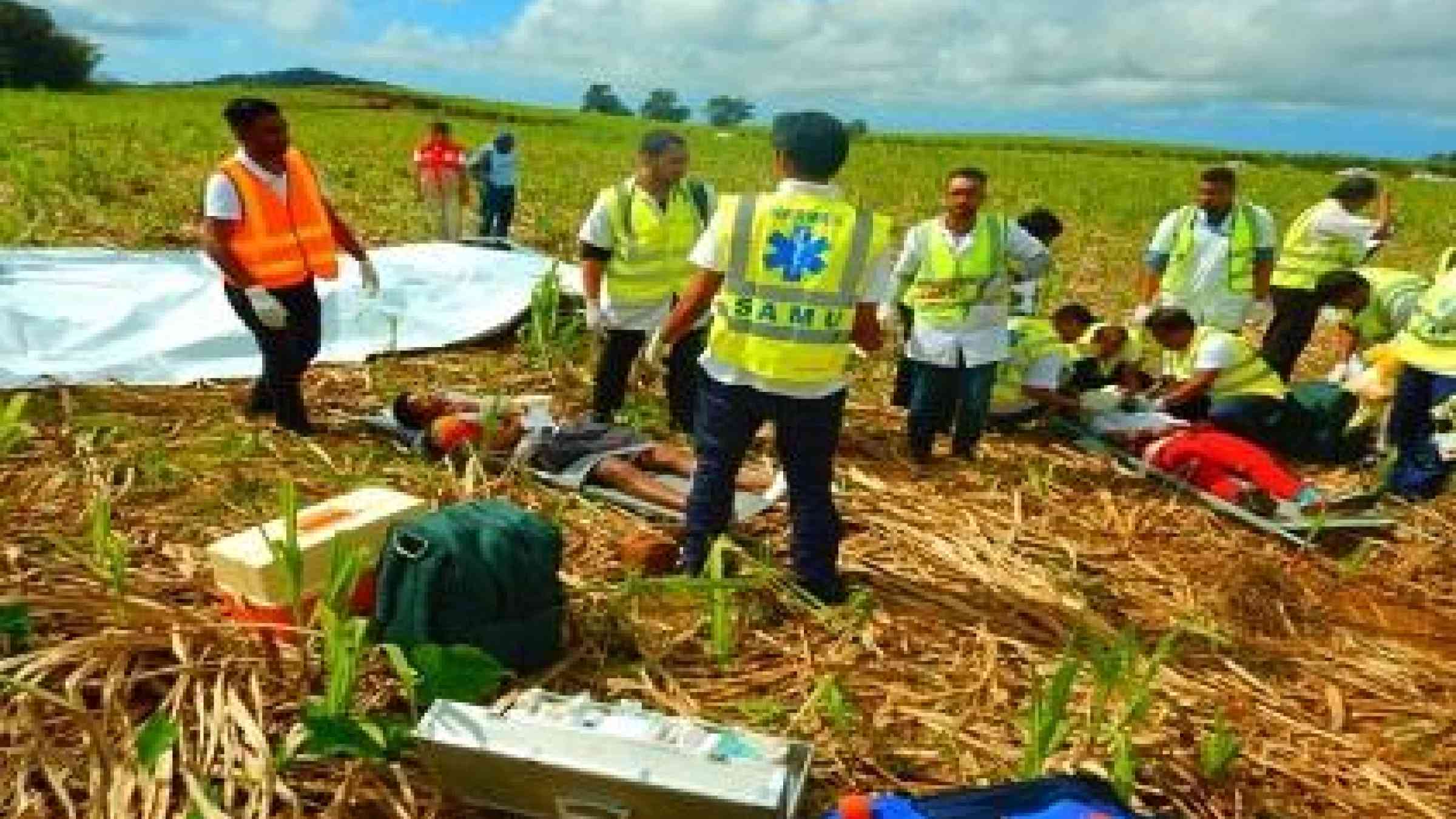Mauritius tests life-saving skills in the face of air disasters

NAIROBI, Kenya, 15 September 2016 – Lying in the midst of the Indian Ocean, Mauritius is keenly aware of the importance of preparing for natural and man-made hazards alike, and the island nation has been assessing its ability to save lives in the event of an air crash.
A clear understanding of the roles and responsibilities of different players and the actions required in a crisis is a critical factor when it comes to minimizing losses. Some 450 participants from government agencies, the private sector, civil society and other groups have put their skills to the test in a real-time drill.
Reducing mortality is the theme of this year’s edition of International Day for Disaster Reduction on 13 October. The aim is to encourage implementation of the Sendai Framework for Disaster Risk Reduction, which seeks to save lives, reduce disaster losses and improve management of disaster risk. Adopted by the international community in March 2015, the Sendai Framework sees natural and man-made hazards as part of a whole picture of risk.
The 12 August AIRTEST16 exercise involved the mock, off-airport crash of a plane carrying 70 people, with the aim being to examine the response on a national scale to such a catastrophe beyond the jurisdiction of the country’s licensed airport operator.
Mauritius has in the past taken part in search parties formed after Indian Ocean air crashes. In November 1987, South African Airways Flight 295 was heading towards Mauritius for a scheduled stopover on its way to Johannesburg from Taiwan. The plane suffered a catastrophic in-flight fire in the cargo area and crashed just off the eastern coast of Mauritius, killing all 159 persons on board.
In May 2016, several pieces of debris washed ashore in Mozambique and Mauritius and are suspected to be part of the missing Malaysia Airlines Flight 370, which disappeared over the South China Sea in March 2014. It is believed that all 239 people on board the flight from Kuala Lumpur to Beijing died.
The air-crash exercise was organized by the National Disaster Risk Reduction and Management Centre (NDRRMC) of Mauritius, through the National Emergency Operations Command (NEOC), in accordance with the Civil Aviation Security Contingency Plan and the Airports of Mauritius Company Limited (AML) Aerodrome Emergency Plan.
AIRTEST16 came at the tail-end of a four-day advanced disaster management training event in Mauritius conducted by the Defense Institute for Medical Operations (DIMO) of the United States. Local psychologists were coached on Post-Traumatic Stress Disorder during crises and emergencies involving mass casualties.
“This was the first time that post-disaster psychological support was applied by officers of both the Ministry of Health and Quality of Life and private psychologists, in order to add a lifelike angle to the aircraft crash exercise. Observed shortcomings and opportunities for improvement were identified for subsequent review and updating of the Civil Aviation Security Contingency Plan,” said Mr. Khemraj Servansing, Director-General of the NDRRMC.
As one of the world’s Small Island Developing States (SIDS), Mauritius is also highly vulnerable to extreme climatic events and other natural hazards. The disaster profile of the country consists mainly of cyclones, landslides and heavy rains and floods stoked by climate change. Though it is one of the best-prepared countries in the world when it comes to cyclones, heavy rains and flooding have stretched its readiness.
A programme entitled “The Development of an Inundation, Flooding and Landslide National Risk Profile, Maps, Strategy Framework and Action Plans for Disaster Risk Management for the Republic of Mauritius”, was launched in 2012. It has mapped zones likely to be affected by flooding, sea-level rise and landslides, and formulated a strategy and action plan that recognizes the critical importance of all stages of disaster risk management, including prevention and protection, preparedness, response, and recovery. The plan has been enriched by the Sendai Framework’s indicators.
Earlier this year Mauritius enacted a National Disaster Risk Reduction and Management Bill, and organized a capacity-building workshop on disaster risk reduction with support from UNISDR, the UN Office for Disaster Risk Reduction.
In November 2016, Mauritius will host the Sixth Africa Regional Platform and Fifth High Level Meeting on Disaster Risk Reduction, with the latter bringing together ministers. The talks will see the continent adopt a plan to implement the Sendai Framework in Africa.